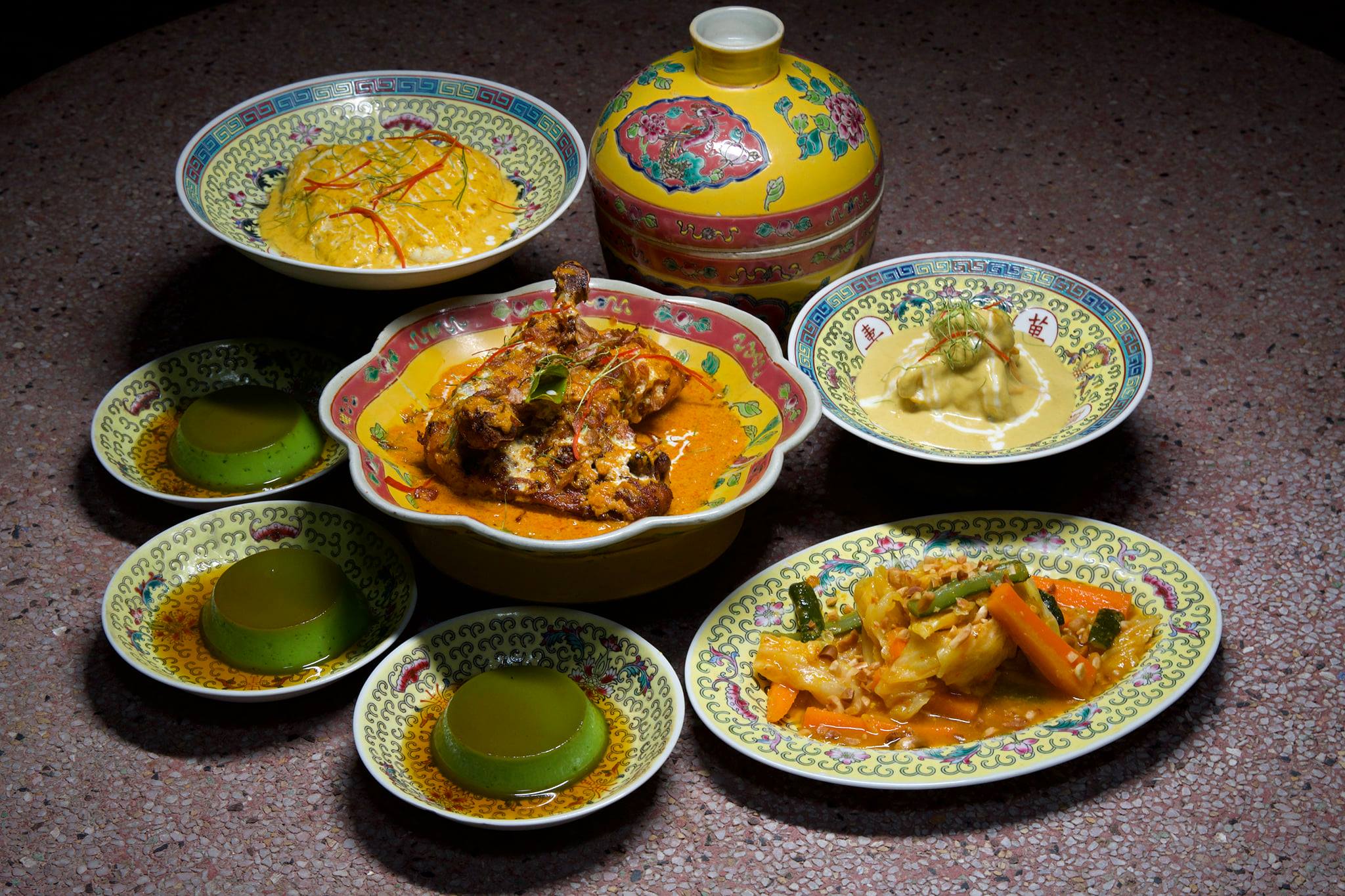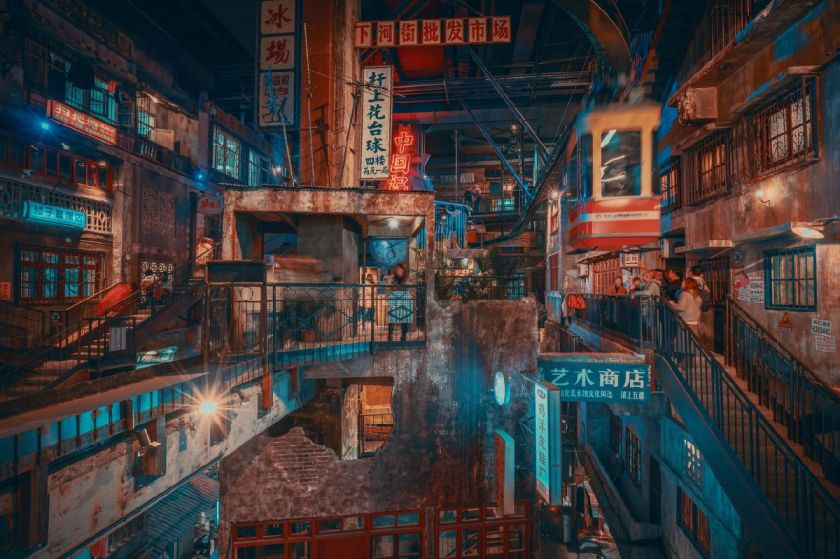Chinese Takeout is a bite-sized, biweekly RADII feature that examines Chinese food from the inside out, by disentangling the (hi)stories behind a single dish or restaurant. Write to us if you have a suggestion or submission.
Now here’s something you don’t see every day.

Off the beaten path in the seaside town of Haikou, the restaurant serves local breakfasts inside the skeleton of a Cultural Revolution-era “model opera” theater.
The Place
The island of Hainan, China’s southernmost province, is often nicknamed the “Hawaii of China” thanks to its warm temperatures and plentiful beaches. While tourists and tropical resorts saturate the capital city, Sanya, the far sleepier town of Haikou in the north is better known for its architectural heritage dating back to mid-19th century.
It’s unlikely that you’d find this noodle shop on foot unless you know where to look. This eatery is very local, and in an obscure location far from Haikou’s oft-visited old town area.
When you see it, however, you know this is something special. This makeshift restaurant still bears the rusting signage of a model opera theater — Longkun Theater (龙昆剧场), in traditional characters — that was built to house model operas during China’s Cultural Revolution.
The History
Throughout the Cultural Revolution, eight model operas that were in keeping with the ideals of the time replaced all traditional theater throughout China. The genre was distinguished by its upbeat scores and predictable narratives, which unfailingly featured the People’s Liberation Army as savior of the poor and marginalized.
At the time, the people of Hainan were both. One of the most reproduced stories, The Red Detachment of Women, even uses Hainan as backdrop, and would have no doubt been performed at venues like Nandaqiao — which would have looked similar to the one below in its heyday.

Photo: Flickr
The Dish
While Maoist tunes are no longer in vogue, “authentic Hainanese noodles” are still a frequent feature in State media reports and foodie blogs. Nicknamed “yan mian” (腌面, “marinated noodles”), they’re a mainstay on every local’s breakfast table on the island.

Authentic Hainanese noodles
Watching Nandaqiao’s staff assemble the noodles at lightning speed is a cornerstone of the dining experience. In a matter of seconds, they’ll mount a bed of plain rice noodles before your eyes with shredded beef jerky, pickled mustard greens, bamboo shoots, deep fried peanuts, beansprouts, coriander leaves, chives, a sprinkle of ground sesame, and dribbles of molasses and soy sauce.
Perhaps as a nod to its Revolutionary heritage, the stage on which breakfast is served bustles with activity — though food safety standards are somewhat of an afterthought. Noodles are served in chipped china bowls, and the zongzi — a glutinous rice dumpling snack wrapped in banana leaves — are picked from a bubbling pot and tossed directly on to the dining table.

Zongzi on the fire
Revolutionary songs have long since been replaced by the sounds of clinking bowls and plates. Yet it’s gratifying to see this piece of living history get an encore.
All photos unless otherwise stated by Mandy Tie.
















